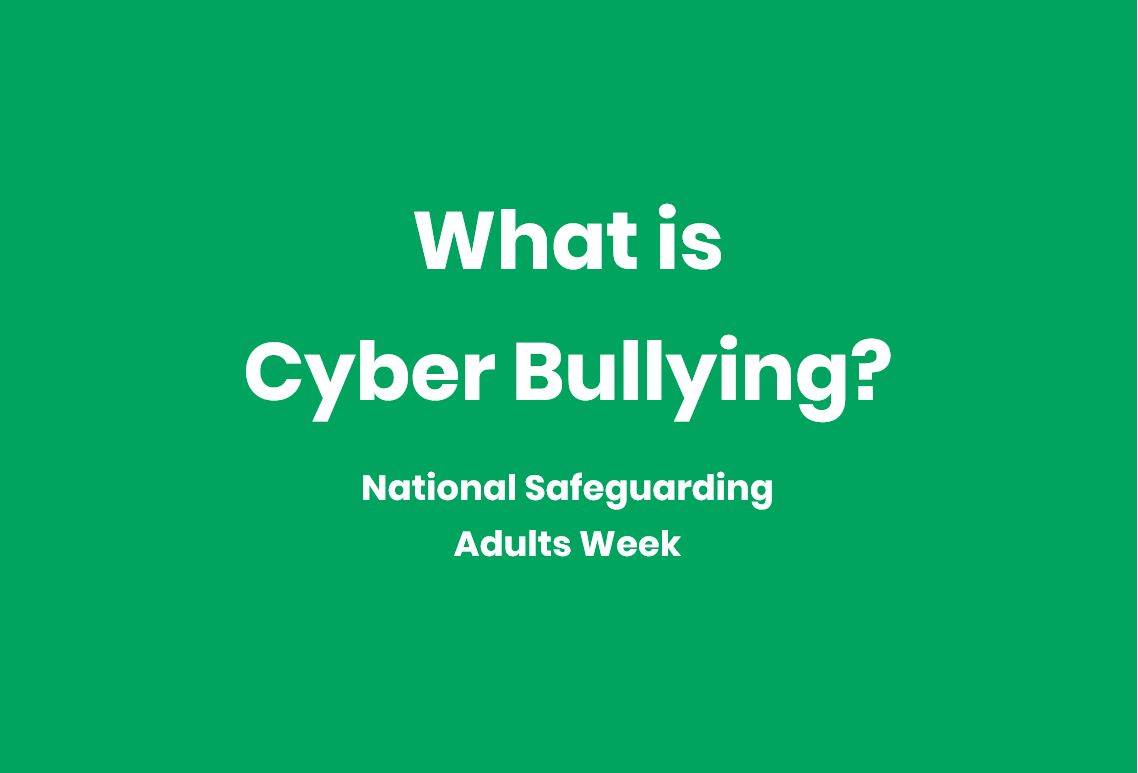
We all use the internet daily for many different things. But how can we stay safe online?
For many people who use the internet, it can be a discriminatory and intimidating environment if characterised by cyber bullying. More often than not, this is an extension of the harassment they face day to day and can have severe consequences. Therefore, it is particularly important to know what cyber bullying is and how to stay safe online.
What is cyber bullying?
Cyber bullying can be defined as the use of internet and/or mobile technology to harass, intimidate, or cause harm to another.
The intentions and results of cyber bullying is not a new problem. However, it has migrated from the workplace and playground to social networking sites, over email and via text.
Cyber bullying can be much more pervasive than traditional bullying and therefore increasingly traumatising. In addition, the public nature of it can mean that anyone can view the victim being cyber bullied; adding shame and embarrassment on top of the already painful experience.
What does cyber bullying look like?
Cyber bullying can take many forms. Often it looks like calling people names, cursing them, spreading lies about them, or any other behaviour that can be construed as trying to hurt or bully them.
There are seven typical ways a victim may be bullied online:
- Harassment– repeatedly sending offensive, rude, and insulting messages.
- Denigration – sharing information about another person that is fake, damaging and untrue with the purpose to ridicule them.
- Flaming– purposely using extreme and offensive language to cause reactions of distress in the victim.
- Impersonation– hacking into someone’s email or social networking account to use their online identity to post vicious or embarrassing material.
- Outing and Trickery– sharing personal information about another or tricking them into revealing secrets and forwarding it to others.
- Cyber Stalking – repeatedly sending messages that include threats of harm, harassment or intimidating messages. This may be illegal.
- Exclusion – intentionally leaving someone out of group messages, online apps, gaming sites and other online engagement.
Why might an adult with learning disabilities be more at risk?
Adults with learning disabilities may be more at risk of cyber bullying.
This could be because they are more trusting, unaware to the fact that they are being bullied, or simply because seen as easy targets to torment.
There is a risk of cyber bullying for all who use the internet, but those with learning disabilities are particularly vulnerable due to their social naivety and tendency to misjudge harmful behaviour. They may lack the confidence to report the bullying which prolongs the problem.
Cyber bullying and grooming
A particular issue related to cyber bullying is grooming online.
One of the most sinister aspects of grooming is that it mimics genuinely positive relationships and makes it harder for the victim to reject or report seriously abusive behaviour. It often occurs where there is a power differential in a relationship, such as between an adult who has a learning disability and someone who doesn’t.
